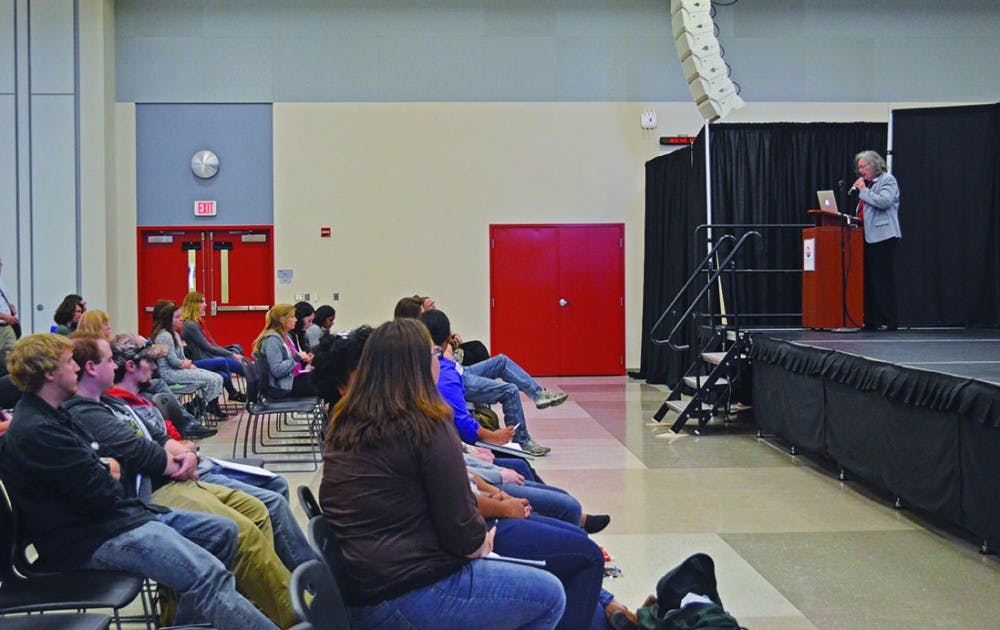University of Maryland professor Jo Paoletti lectured Shippensburg University students on gender identity and its influence on consumer culture, specifically on school uniform and dress code policies in the U.S.
Paoletti talked to students in the Ceddia Union Building multipurpose room on Oct. 15. The lecture was co-sponsored by the SU Fashion Archives and Museum and the women’s and gender studies program.
Paoletti focused on varying uniform and dress code stances in U.S. schools over the course of several decades. School dress codes transform as a reaction to fashion changes, sccording to Paoletti.
Paoletti addresses the view of school dress codes being violations of students’ civil rights and restricting their freedom of expression. Many high school students are faced with rules of what they can and cannot wear and face consequences if they break these rules, according to Paoletti. Often, students will be pulled from class and forced to wait for someone to bring them an extra change of clothes from home or be sent home if they violate the dress code.
Some school dress codes are often seen as targeting girls, said Paoletti. In 1965, white go-go boots were banned from schools because they were considered to be made for outdoor settings and the boots were viewed as provocative. In 1969, schools banned girls from wearing pants because they were too casual and drew too much attention to the female body. At the same time, miniskirts had reached their shortest length and schools looked the other way.
There are some rules that target boys, too, according to Paoletti. Most schools banned young men from having hair past a certain length unless they had a reason, such as making a political statement. Even then, it still was not a guarantee they could keep their hairstyle.
“It’s amazing that something as harmless as long hair on boys can be a big deal in some places,” said Madeline Walsh, a third-year student at SU.
“It’s interesting to see how what schools have banned has changed over the years,” said Gretchen Pierce, associate professor of the history department. “It was also funny to hear how out of touch many of these policies have been with reality — forcing teenagers to buy styles that stores just do not carry or banning other items that have already gone out of style.”
Conflicts about school dress codes reflect on the difference between conservatives and liberals and their cultural views, especially during the 1960s, according to Paoletti.
From the implications of gender roles to the infringement on one’s freedom of expression, dress codes are still a controversial issue, according to Paoletti.





The Slate welcomes thoughtful discussion on all of our stories, but please keep comments civil and on-topic. Read our full guidelines here.